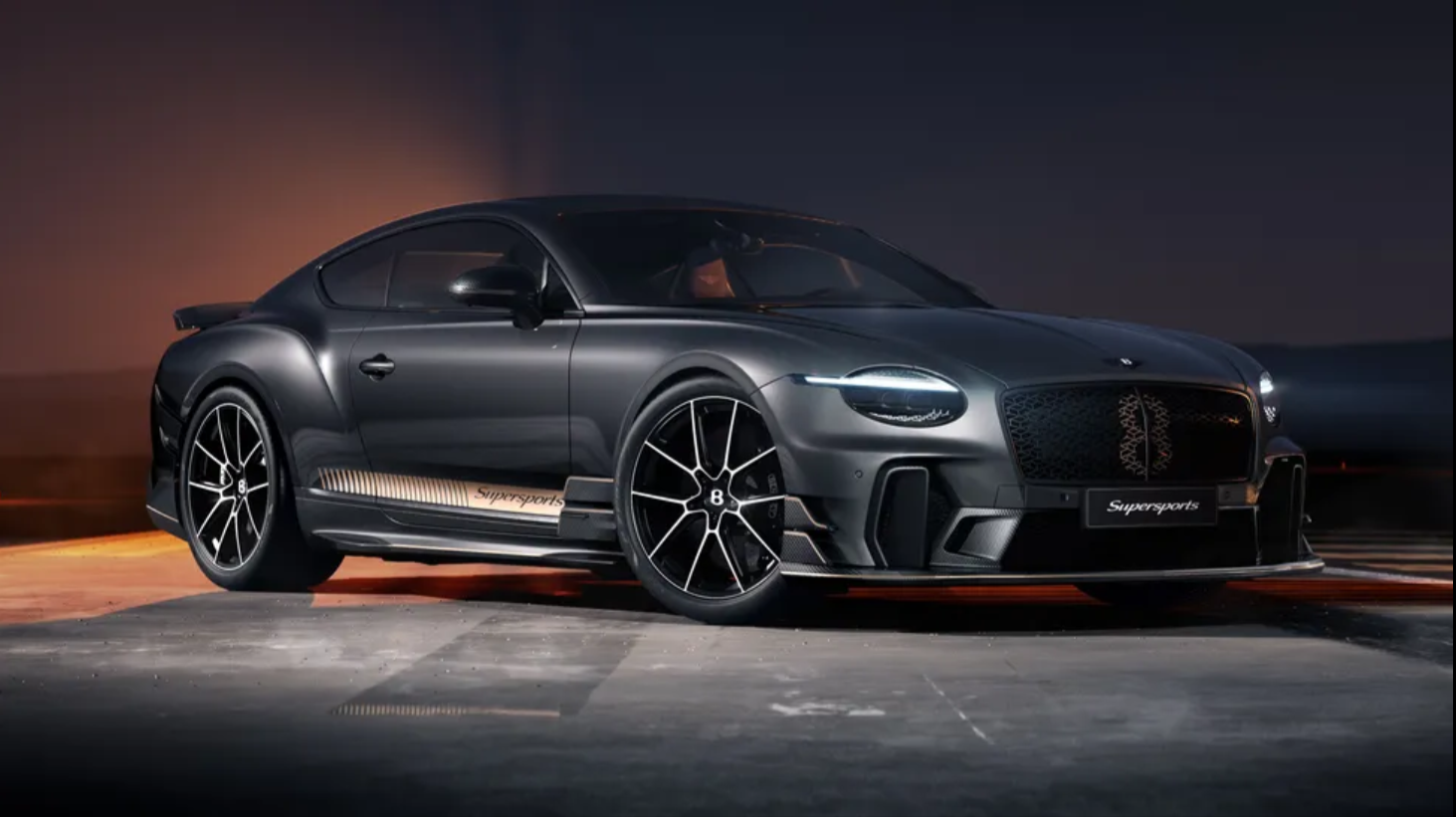The Bolide, which was first shown as an exotic and fantastical notion, has now evolved into Bugatti's most ambitious project to date. The brand declared in 2021 that it would start a three-year development program in advance of the first deliveries later this year, and that it would bring the track-only W16 hypercar into restricted production. Each of the 40 units, which combine the legendary quad-turbocharged W16 motor with a lightweight, stripped-down shell, will set you back from £3.5 million.
Following a two-year period of development, Bugatti has finally disclosed information on the Bolide's custom Brembo braking system. With eight-piston aluminum monobloc calipers on the front axle operating on 390mm carbon discs, the model is reportedly the largest carbon-carbon automobile arrangement ever made. The rear axle has a layout identical to the front, but with six-piston calipers and somewhat thinner 390mm discs. Even the master cylinders and brake fluid are specifically designed for this type, so each disc weighs only 3.1 kg despite the impressive stopping power it offers. These specifications align the Bolide's braking system with the Le Mans Hypercar program and Formula 1.
"We had to reengineer the entire system to cope with the incredible yet demanding characteristics and power of the car," stated Mario Almondo, Chief Operating Officer of Brembo Performance. For instance, the front caliper—the largest we have ever installed on a race car—is, in my opinion, a true engineering marvel. We were able to create the lightest design feasible considering the size and power of the Bolide by using carbon compounds that are comparable to those in Formula 1.
The 8-liter, quad-turbocharged W16 engine of Bugatti powers the Bolide, producing 1600 Nm of torque and 1578 horsepower for those Michelin slicks. Unlike the Chiron, the Bolide has a greater red line and always relies on all four of its turbochargers. We'll have to wait for production car statistics, but the lighter, more powerful concept was said to reach a peak speed of nearly 498 kph and complete the 0-100 kph race in only 2.17 seconds. The idea was also said to be 6.84 seconds quicker than the existing record holder, Koenigsegg's Regera, to go from 0 to 400 kph and back to stop.
Bugatti has upgraded the four turbochargers to create greater boost at higher engine speeds and optimized the cooling and lubrication systems to guarantee the vehicle can survive the rigors of a track session. In order to maintain the engine, gearbox, and differential at appropriate operating temperatures, three air-cooled charge coolers are used. A water pre-cooling system is also included to assist the system.
The true star of the Bolide is its 1450 kg curb weight, which is incredible given the massive near-500 kg weight of the engine. In order to reduce weight as much as possible, Bugatti used air-to-air cooling instead of water-to-air cooling, and 3D-printed titanium parts for the whole vehicle, including the forged magnesium wheels, wrapped carbon fiber driveshaft, and stripped-down interior.
Pushrod suspension is used, and the horizontal dampers are visible via holes in the hood. With a peak downforce rating of 1800 kg on the rear axle and 800 kg on the front at 320kph, extreme aerodynamics were also a top priority. The roof-mounted intake also has a "morphable outer skin," which changes its surface roughness quickly to cut drag by 10%. All of this, according to Bugatti, enables the Bolide to attain a remarkable 2.8G lateral acceleration.
The Bolide has been put through real-world aerodynamic testing, where its adjustable rear wing, rear diffuser, and extreme front splitter have all been tested. Now that the majority of these parts have been modeled using mathematics in simulations, Bugatti is making sure the hypercar operates reliably and on track for drivers of different ability levels. However, preliminary testing indicates that it can produce 2.5G of lateral acceleration when cornering, so it's not any less powerful.
Surprisingly, Bugatti thinks it can nearly equal the 2020 concept's announced numbers. Peak power drops from 1825bhp to 1578bhp when using the more accessible 98 RON fuel instead of the 110-octane of the idea, although it is still 100bhp more powerful than the most powerful W16 variant to date. The Bolide will reach an incredible power-to-weight ratio of 1106 bhp/ton if it meets these goals.
Numerous weight-saving methods, such as the use of 3D printing and biomimicry, are employed to attain the low kerb weight. Applications of these technologies may be found in parts such as the aero car's mounting gear, which has a patented design resembling bone. Each titanium component, printed using additive manufacturing processes like 3D printing, has thin outside walls and a complicated hollow structure inside. The mass-to-strength ratio of the similarly designed suspension pushrods is astounding, as they can transfer up to 3.5 tons of force while weighing just 100 grams. Smaller parts of the Bolide, such the load-bearing aero components and the wheel-mounted turbofans cooling the 390mm (front) carbon-carbon brakes, are also equipped with this same technology.
With the first of 40 models expected to be delivered later this year, Bugatti is nearing the completion of its three-year development cycle for the automobile. Fees begin at c£3.5 million.


















.jpg)


.jpeg)

.jpeg)
.jpeg)

